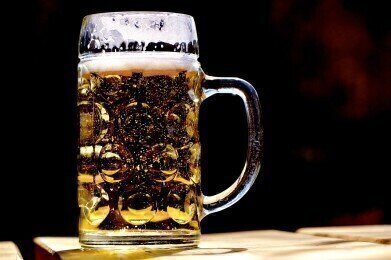Environmental Laboratory
How Do Bubbles Get into Beer?
Apr 27 2018
There’s nothing quite like a cool, crisp lager on a warm summer’s day to relax and unwind. The bubbles inside that beer are all-important to the experience as well, not only for the lip-tingling fizziness they provide, but for the flavour they contribute to the finished beverage.
How exactly do the bubbles get into the beer? And is there a more environmentally-friendly way to go about the process? The world’s biggest brewery certainly seems to think so. AB InBev, the Belgian-based company which owns such household brands as Beck’s, Budweiser, Corona and Stella Artois, have spent four years researching a method of introducing bubbles which uses less energy and water and produces less carbon dioxide (CO2) than traditional techniques.
All in the bubbles
By all accounts, the bubbles in a beer are instrumental to its quality. A flat beer is the stuff of nightmares for lovers of lager, pilsner and other carbonated forms of beer, which is why breweries and beer companies all over the world take time and effort to make sure their produce is filled with the fizzy stuff.
Traditionally, the bubbles needed for the early stages of the beer making process are formed from the natural process of boiling – which, of course, requires significant amounts of water and heat. This not only uses up one of our most precious resources and consumes substantial amounts of energy, but also produces damaging by-products such as CO2.
A greener way to get bubbles
AB InBev researched a more environmentally-friendly method of carbonating their beer at their headquarters in Leuven, before expanding the experiment to two plants in Britain. With the trial runs now completed, they have announced they are able to successfully create the bubbles in their beer without using as much energy or water and, crucially, without affecting its taste.
The greener method still heats up the brew at the outset – but not to boiling point. Instead, an injection of CO2 or nitrogen to the mixture generates the bubbles and the company claim that because of the lower temperatures involved, the beer also stays fresher for longer. The final bubbles which are present in the finished product are still achieved through the age-old processes of yeast reacting with sugars and pressurisation inside the keg.
Big pay-offs
AB InBev are hoping that all of its offshoots will adopt the new practice within the next decade and predict that doing so could reduce carbon emissions by 5% and water consumption by 0.5%. Although that figure might sound small, every centimetre counts when it comes to water preservation and accumulatively, across the whole company, the switch could save the equivalent of 1,200 swimming pools.
AB InBev have also offered to share its methodology with smaller breweries, though bigger rivals will be required to pay a stipend for the pleasure. In any case, it should allow consumers to make a more environmentally-conscious choice when buying their beer and could revolutionise the industry as a whole.
Digital Edition
IET 34.2 March 2024
April 2024
Gas Detection - Biogas batch fermentation system for laboratory use with automatic gas analysis in real time Water/Wastewater - Upcycling sensors for sustainable nature management - Prist...
View all digital editions
Events
Apr 22 2024 Hannover, Germany
Apr 22 2024 Marrakech, Morroco
Apr 23 2024 Kuala Lumpur, Malaysia
Apr 23 2024 Kintex, South Korea
Apr 23 2024 Edmonton, AB, Canada


















